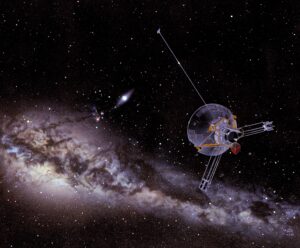Space Exploration
First American in Space
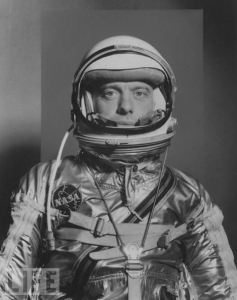 May 5, 1961
May 5, 1961
NASA astronaut Alan Shepard becomes the first American in space when he makes a fifteen minute suborbital flight aboard the Mercury capsule Freedom 7. He reaches an altitude of 115 miles, during which he experiences about five minutes of weightlessness.
Hubble Deployed
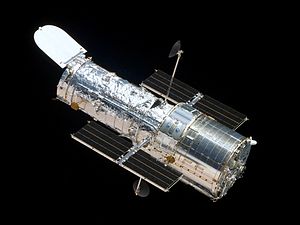 April 25, 1990
April 25, 1990
The crew of the Space Shuttle Discovery deploys the $2.5 billion Hubble Space Telescope. There will be initial difficulties caused by a flaw in the design of the telescope’s main mirror. Image correction software will keep the telescope useful until corrective optics are installed December of 1993.
Surveyor 3 Launched
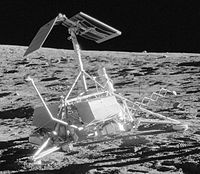 April 17, 1967
April 17, 1967
The spacecraft Surveyor 3 is launched from Cape Kennedy, Florida. It is the second U.S. spacecraft to make a soft landing on the Moon (Surveyor 2 crash landed) where it will study the lunar surface and send more than 6,300 pictures back to Earth. In all, seven Surveyors will be sent to the Moon, five of them successfully completing soft landings.
Columbia Lands
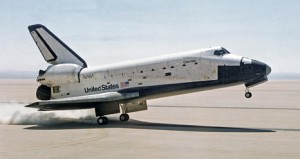 April 14, 1981
April 14, 1981
The first test flight of the first operational space shuttle, the Columbia, ends successfully as the orbiter lands at Edwards Air Force Base in California.
Houston, We’ve Had a Problem
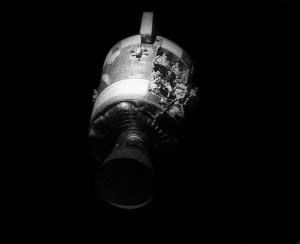 April 13, 1970
April 13, 1970
An oxygen tank aboard the Service Module of Apollo 13 explodes. Moments later, astronaut Jack Swigert announces the later-famous phrase, “Houston, we’ve had a problem here.” The explosion cripples the spacecrafts, resulting in a near-complete loss of electricity and oxygen. The oxygen leak will force the crew to abandon the command module for the lunar module as a makeshift “lifeboat” becoming stranded for four days, more than two hundred thousand miles from Earth, while NASA plans the most spectacular rescue mission in U.S. space history. Against all odds, the three astronauts will return safely back to Earth.
First Space Shuttle Launch
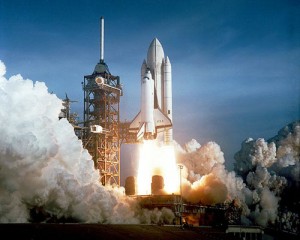 April 12, 1981
April 12, 1981
NASA launches the first Space Shuttle mission, STS-1, sending the Columbia on its maiden voyage. This mission intended to prove the feasibility of the Space Shuttles in specific, and reusable spacecraft in general. Originally set to launch on April 10th, problems delayed the launch by two days, which caused the launch to occur exactly 20 years after Yuri Gagarin became the first man to fly into space.
First Man in Space
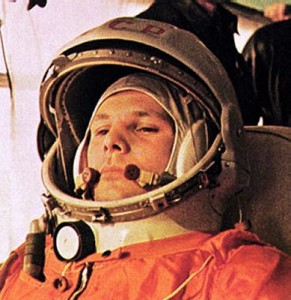 April 12, 1961
April 12, 1961
Yuri Gagarin, age 27, becomes the first man to orbit the Earth aboard the Soviet spacecraft, Vostok 1. He remains in space for an hour and forty-eight minutes before re-entering the atmosphere. This ultimately was Gagarin’s only space flight. He died on March 27, 1968 when the MiG-15 he was piloting crashed near Moscow. Reportedly, at the time of his death, Yuri Gagarin was in training for a second space mission.
The Mercury Seven
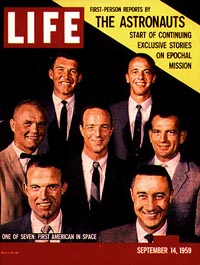 April 9, 1959
April 9, 1959
NASA announces the selection of the United States’ first seven astronauts, Scott Carpenter, Gordon Cooper, John Glenn, Gus Grissom, Wally Schirra, Alan Shepard, and Donald Slayton, The seven were chosen from 110 applicants to participate in the Mercury program, the nation’s first manned space program. The news media quickly dubs the group the “Mercury Seven.” On May 5th, 1961, Shepard will become the first American in space during the flight of Freedom 7.
Pioneer 11 Launched
NASA launches Pioneer 11, the second of two probes along with Pioneer 10 sent out to explore the outer solar system. Pioneer 11 became famous for being the first man-made object to fly by Saturn and also for making the closest flyby of Jupiter. After passing Saturn, Pioneer 11 continued on a trajectory towards the center of the Milky Way and will pass the star Lambda Aquila in 4 million years. The last contact with Pioneer 11 was in November of 1995. Both Pioneer spacecraft carry a plaque with a message from humanity in the chance that it is ever intercepted by intelligent life.
First Commercial Communications Satellite Launched
Intelsat I, the world’s first commercial communication satellite was launched into geosynchronous orbit above Earth. Built by the Hughes Aircraft Company, launched by NASA, and run by the Communications Satellite Corporation (COMSAT), Intelsat I was was nicknamed “Early Bird” and would go on to handle the first nearly instantaneous communications between Europe and North America. When activated in June of that year, Early Bird proved the feasibility of using synchronous satellites for commercial communications and handled telephone traffic, TV signals, telegraph, and faxes.

